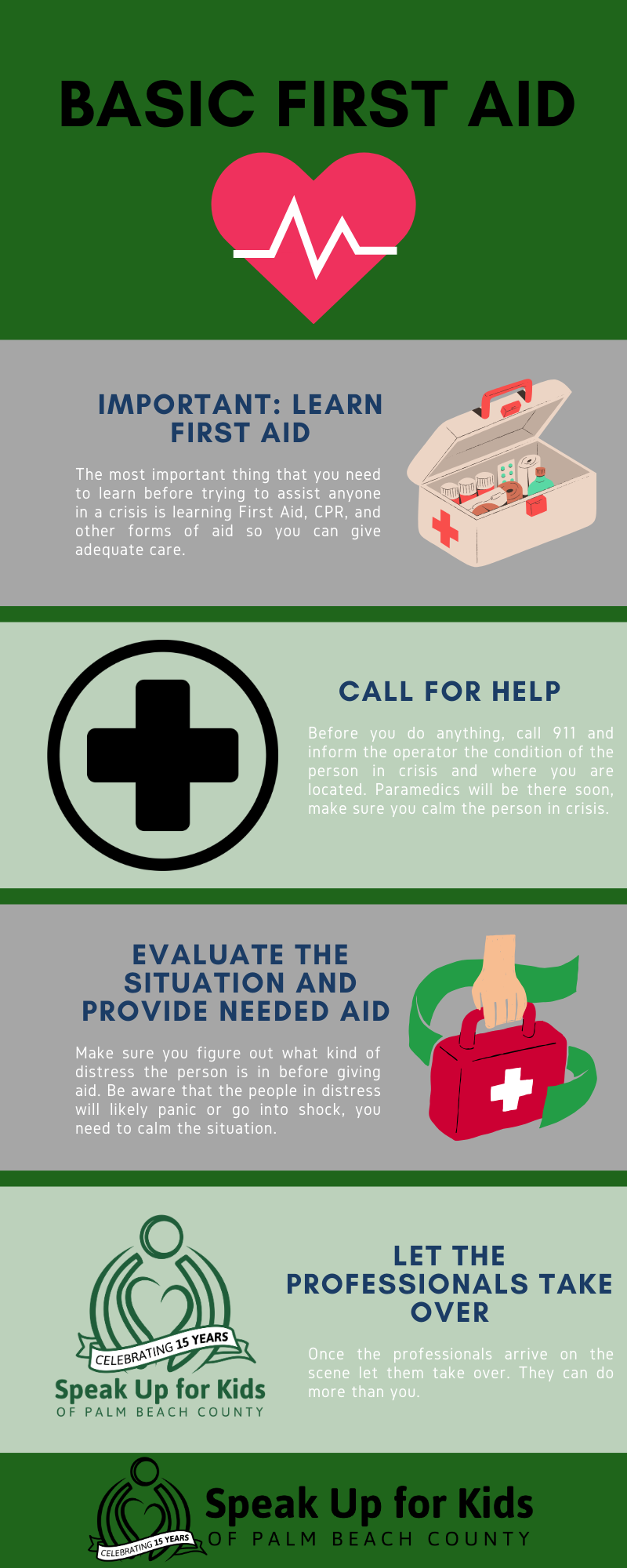Basic First Aid: A Guide to Handling Emergencies
Contributed by Speak Up for Kids Student Intern Team — This article was developed through the combined efforts of multiple student interns, each bringing unique skills and perspectives to support life skills education for foster youth.
Overview
Whether you are out with friends or at work, knowing basic First Aid is crucial in the event of a crisis or if someone collapses in front of you. Legally, Good Samaritan Laws protect you from any accidental harm you might cause while assisting someone in need, so do not hesitate to help. Follow these steps to provide effective first aid.
1. Ensure Safety Around the Area
Before you begin, make sure the area is safe from any dangers for both the person in need and yourself. You cannot provide effective assistance if you are at risk. Check for hazards such as traffic, fire, or any other potential threats.
2. Call 911
Once you have secured the area, call 911 immediately. Stay calm and provide the dispatcher with all necessary information, including the nature of the emergency, the condition of the victim, and your location. Clear and concise communication can significantly impact the response time and the type of help dispatched.
3. Evaluate and Assess the Situation
Assess the situation to understand the type and severity of the person’s condition. Look for signs of breathing, consciousness, and any visible injuries. If the situation is beyond your capability to handle, it is best to wait for professional help while ensuring the person remains as stable as possible.
4. Begin to Provide First Aid
If you have previous first aid training, apply the appropriate techniques for the situation. Common first aid procedures include:
CPR (Cardiopulmonary Resuscitation): For someone who is not breathing or has no pulse.
AED (Automated External Defibrillator): To help someone experiencing cardiac arrest.
Heimlich Maneuver: For someone who is choking.
Wound Care: Treating cuts, scrapes, and severe bleeding.
Stabilizing Fractures and Sprains: Immobilizing injured limbs.
Managing Shock: Keeping the person warm and calm.
Poisoning and Environmental Hazards: Responding appropriately to exposure to toxic substances or extreme weather conditions.
5. Provide Comfort and Reassurance
The person in crisis may be in shock or panic. Offer comfort and reassurance to help them stay calm. Your calm demeanor can prevent further harm. For example, if someone is drowning, they may thrash around and grab desperately; maintaining calm and providing clear instructions can help manage the situation until help arrives.
6. Let the Professionals Take Over
When emergency responders arrive, step back and allow them to take over. They have the expertise and equipment necessary to provide advanced medical care. Provide them with any information you have about the situation and what actions you have taken.
7. (Most Important) Get First Aid Training
The most critical step is to get trained in first aid before an actual crisis occurs. Learning CPR, the use of an AED, and other first aid techniques can prepare you to handle emergencies effectively. Many organizations offer certification courses that can equip you with the knowledge and confidence to act swiftly in an emergency.
Final Thoughts
By following these steps, you can provide essential aid during a crisis, potentially saving lives and minimizing injury. Always remember, your preparedness and willingness to help can make a significant difference in emergency situations.


